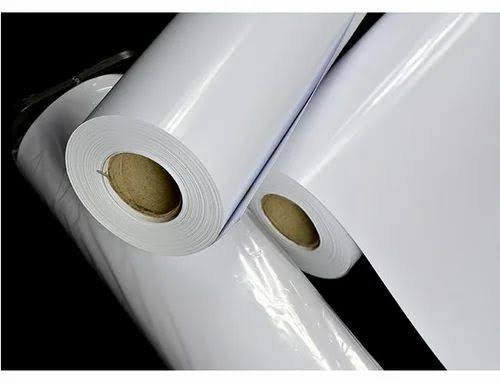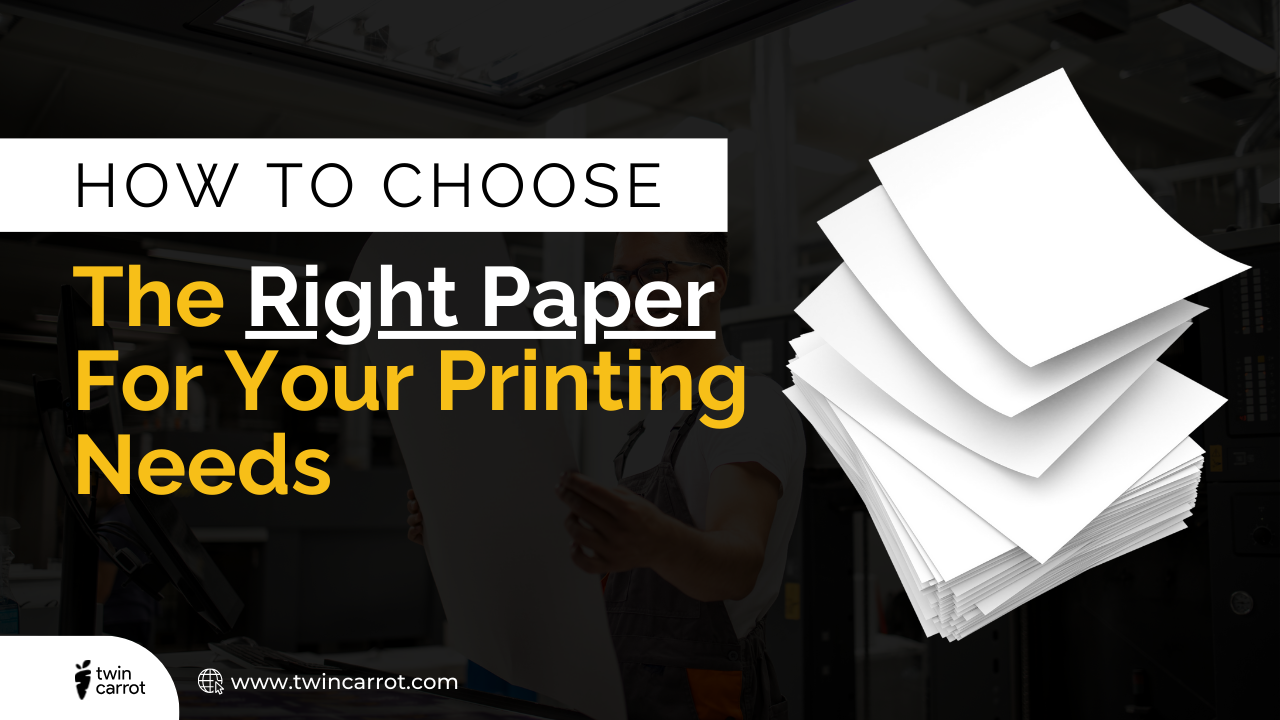Selecting the correct paper for a printing project isn’t just a mundane task; it’s a crucial step that can significantly shape the outcome of your work.
I remember my first significant printing project where I had to prepare materials for a community event. My aim was to create eye-catching flyers and brochures, and it was then I found that the paper choice influenced not just the looks, but also the message I intended to convey.
But then the question came. “How do I choose the right paper?”
This set me on a path of discovery, where I learned just how impactful the right paper can be, and also the criteria I needed to follow in order to choose just the right paper for my project.
So in this article, I will be sharing my discovery – the various types of paper available, the essential factors to consider when selecting print paper, and the most suitable options for different printing projects.
By exploring these aspects, you’ll have sufficient knowledge to guide you on how to choose the right paper for your printing needs.
Understanding Paper Types
If you want to know how to choose the right paper for your printing need, the first step is to understand the different categories of papers available.
1. Uncoated Paper

Uncoated paper provides a natural feel and texture that’s often preferred for a more traditional look. This type absorbs ink exceptionally well, making it ideal for text-heavy documents like letterheads, envelopes, and reports.
One of the perks of uncoated paper is that it tends to be writable, which is perfect for items such as stationery or flyers that might require handwritten notes. You can use it for business letters, presentations, and any project where the readability of text is paramount.
Pros
- Great for heavy text.
- Allows writing with different mediums.
- Generally more affordable.
Cons
- Colors may appear softer, and images can lack the vibrancy found on coated options.
2. Coated Paper

Coated paper comes in two main finishes: glossy and matte. Glossy papers have a shiny surface that reflects light, making colors look vivid and sharp. It’s the go-to choice for images in brochures, posters, and advertisements.
On the other hand, matte paper provides a softer finish, which is sophisticated and reduces glare, making it suitable for high-end products. Coated papers are best for magazines, catalogs, and promotions requiring sharp, colorful images.
Pros
- Excellent color reproduction.
- More durable against wear.
- Suitable for photographic quality.
Cons
- Generally not writable (except when using special pens), may be more expensive.
3. Recycled Paper

For those concerned about sustainability, recycled paper offers an eco-friendly alternative without compromising on quality. This paper can be either uncoated or coated, depending on your choice, and it’s made from post-consumer waste, reducing the need for new raw materials.
If you want to demonstrate commitment to environmental responsibility through printed, this will be the best option.
Pros
- Supports sustainability efforts.
- Often unique textures due to fibers used.
Cons
- Quality can vary, and brightness/colors may not be as vibrant as their non-recycled counterparts.
4. Specialty Papers

Specialty papers encompass a wide variety of options, including textured, metallic, and creative craft papers. These can add a distinctive touch to invitations, greeting cards, and other artistic projects. It can be used for wedding invitations, limited edition prints, or any creative project requiring a unique touch.
Pros
- Allows for personal customization, memorable tactile experiences.
Cons
- May require specific printers/settings, potentially expensive.
Factors to Consider When Choosing Paper for Printing
Choosing the correct paper may seem straightforward, but several factors can significantly affect the outcome.
1. Appearance (Brightness/Opacity)

Brightness refers to paper’s ability to reflect light, which significantly influences the presentation of printed colors. The brighter the paper, the more vivid the colors will appear.
This is particularly important for projects with rich visuals, such as photography books, marketing brochures, or product catalogs. Bright white paper not only enhances saturation but also provides a cleaner, more professional look.
For projects that rely heavily on imagery, like photo-heavy brochures, aim for paper with a brightness level above 90 on the ISO scale for optimal results.
Opacity, on the other hand, is about how much light passes through the paper. High opacity is crucial when printing on both sides, as it ensures that text and images from one side don’t bleed through to the other, keeping your content clean and readable.
If you are printing double-sided flyers or brochures, an opaque paper is recommended to avoid the visibility of text or images from the reverse side. Look for paper with at least 90% opacity to ensure clarity.
2. Weight
Paper weight is another critical factor that greatly affects the finished product’s feel and durability. Measured in grams per square meter (gsm), the appropriate weight varies depending on the printing application.
- Lightweight (80-100 gsm): Typically used for everyday printing such as letters, flyers, and memos. This paper is economical and easy to handle, ideal for mass distribution. However, because of its lightness, it may not leave a lasting impression.
- Medium Weight (120-200 gsm): This range serves well for brochures, folders, and other documents that need a bit more heft to convey quality. It strikes a balance between cost-effectiveness and a premium feel.
- Heavyweight (200+ gsm): Best suited for business cards, postcards, and premium brochures. Heavier paper creates an impression of quality and professionalism but can significantly increase printing costs, so it’s essential to evaluate the necessity versus the budget.
Always consider how the paper weight will influence handling. For instance, heavy stock can be challenging to fold, while lightweight paper may feel insubstantial.
3. Coating
The type of coating on paper directly affects not just its appearance but also its functional characteristics.
- Gloss Coating

This finish provides a shiny surface that enhances colors, making them pop off the page. It’s ideal for promotional materials and high-impact visuals, such as advertisements and brochures.
However, the reflective nature of gloss coating can create glare, making it harder to read text or view images at certain angles. Additionally, gloss-coated paper is usually less writable unless specific pens are used.
- Matte Coating

Offering an elegant, sophisticated look, matte coating reduces glare significantly, making it easier to read and write on. It’s perfect for high-end stationery, invitations, and any material where a subtle, classic appearance is desired. However, colors may appear somewhat muted compared to glossy finishes.
Consider how the coating affects ink absorption. For instance, gloss paper can cause ink to take longer to dry, potentially leading to smudging if handled immediately after printing.
- Specialty Coatings: There are also options like silk, which provide a luxurious feel or textured finishes that add depth and interest to printed pieces. These specialty papers can enhance the tactile experience and make a strong impression.
4. Budget
Budget is a practical aspect of the paper selection process. It’s important to recognize that the price of paper can fluctuate based on various factors, including type, weight, and finishes. Establishing a budget at the outset will help you make informed decisions while avoiding overspending.
- Evaluating Costs: It’s wise to assess whether investing in premium paper justifies the expense based on the project’s goal. For instance, a business card meant to create lasting impressions may warrant a higher budget spent on heavy, coated stock, while a one-time event flyer might be more suited to a lighter, budget-friendly option.
- Bulk Discounts: Consider ordering in larger quantities, as many suppliers offer discounts for larger orders, which can significantly reduce costs per unit.
5. Environmental Impact
In our world today, many businesses and consumers place a high value on environmental sustainability. When selecting paper, consider options that minimize your ecological footprint.
- Certifications: Look for papers that are certified by organizations like the Forest Stewardship Council (FSC) or the Sustainable Forestry Initiative (SFI). These certifications ensure that the paper is sourced from responsibly managed forests.
- Recycled Content: Using paper made from recycled materials can help position your project as environmentally conscious. Recycled paper can perform well and provides a unique texture, making your prints stand out while showcasing a commitment to sustainability.
When discussing your orders with suppliers, inquire about their eco-friendly options. Some paper manufacturers offer a variety of sustainable, high-quality choices that can work beautifully for your projects without sacrificing aesthetics.
What is the Best Paper for Your Printing Project?
Now that you understand the types and factors influencing paper selection, here’s a detailed guide to help you match paper types to specific printing projects.
1. Business Cards
Business cards represent you and your brand. For a strong first impression, opt for a heavyweight, coated paper. Consider a matte finish for elegance or glossy for a more vibrant look.
– Recommendation: 350-400 gsm coated card for durability and professionalism.
2. Flyers
For general promotional flyers, a medium-weight uncoated or coated paper is excellent. This ensure readability and vibrant colors, making it an ideal choice for local events or promotions.
– Recommendation: 130-170 gsm coated paper for eye-catching design, or uncoated paper for ease of writing.
3. Brochures
Brochures benefit from heavier coated paper that supports vibrant images and text while maintaining a professional appearance.
– Recommendation: 170-300 gsm coated paper helps achieve a polished, high-quality look and sturdy feel.
4. Stationery
For personalized correspondence, uncoated paper allows for easy writing while projecting a classic style.
– Recommendation: 90-120 gsm uncoated paper is typical for letterheads and envelopes.
5. Postcards
Postcards require sturdy paper to withstand mailing. A thick cardstock with a glossy or matte finish is ideal since it will hold up well and offer clear visuals.
– Recommendation: 300-350 gsm cardstock for durability and visual appeal.
By contemplating your specific needs and objectives, it will guide you on how to choose the right paper for your printing needs.
With your newfound understanding of paper types and considerations, it’s time to put this knowledge to use. Evaluate your next printing project and think about how the right paper can elevate your creation. Whether it’s for business cards, brochures, or any other material, making an informed choice will not only enhance the aesthetics but also reinforce your message.
If you’re ready to take the next step in your printing journey, consider reaching out to TwinCarrot. With a broad selection of paper types and expert guidance tailored to your specific needs, we can ensure your project shines with the right material.


There are 2 comments
[…] close attention to factors like color saturation, print clarity, and the type of paper or materials used for the samples. Seeing the work in person can reveal much more than digital […]
[…] Selecting the right paper is crucial as it significantly affects the print’s overall quality: […]